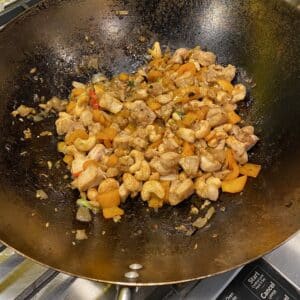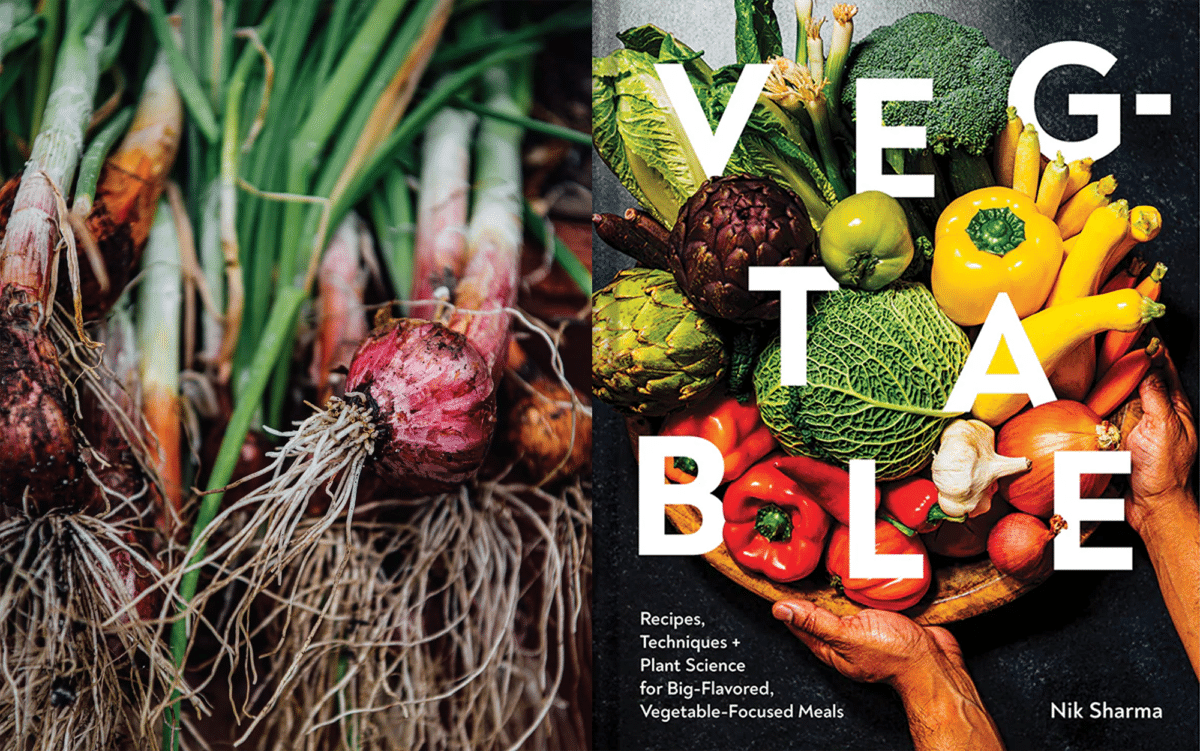Recipes, Techniques, and Plant Science for Big-Flavored, Vegetable-Focused Meals
As a self-identified science nerd, I was excited to learn about Nik Sharma’s newest book, Veg-table.
I was already a fan of Nik Sharma, having read his book, Flavor Equation from cover to cover. I was excited when I heard he had written a book focusing on vegetables. While there is no shortage of science in Veg-table, the new book feels more like a collection of creative recipes from an author with expertise in the chemistry of cooking. Sharma is trained as a molecular biologist who has combined his technical knowledge with a keen understanding of spices and flavors. It’s a combination that adds up to some really great and interesting results.
The science
translates into things like techniques for streamlining recipes and prep, tips for extending the life of vegetables in storage by understanding how they break down, and the inclusion of ingredient weights throughout.
The recipes
feature frequent use of umami-rich ingredients like miso, preserved lemon, fish sauce, soy sauce, anchovy paste, parmesan, Worcestershire, tamarind paste, feta, capers and the like. He also makes use of a wide variety of spices. Many of them – like mustard seeds, garam masala, amchur, nigella and Kashmiri chili powder – are influenced by the author’s roots in India. Sharma has a great instinct for combining these disparate components in surprising ways that ultimately work really well.
Unknown content block type: FlexiblePageTemplateFlexibleContentPhotoFullWidthLayout
{
"__typename": "FlexiblePageTemplateFlexibleContentPhotoFullWidthLayout"
}Pasta recipes
include Shallot + Spicy Mushroom Pasta, Spaghetti with Roasted Tomato Miso Sauce, Cauliflower Bolognese.
I chose to make Pasta with Broccoli Miso Sauce. I loved the way the miso worked with the preserved lemon and parmesan as flavor enhancers. With all that umami, I did not miss meat at all, although I did find myself musing about adding some texture the next time (and there will be a next time!) Perhaps some pine nuts or toasted breadcrumbs? As in many of the other recipes in the book, he suggests using Aleppo, Maras, or Urfa red pepper flakes rather than the more typical hot chili flakes. I used Urfa, which I think gave the dish a subtle, fruity, and nuanced taste.

I also tried the Cashew + Bell Pepper Chicken with Coconut Rice and the Crispy Salmon with Green Curry Spinach. I served the salmon with the Coconut Rice from the chicken recipe. The chicken was easy to prepare, although perhaps not as distinguished as some of the other recipes. My favorite part was the use of basmati rice for the coconut rice and the addition of cardamom, which added a somewhat unexpected and welcome flavor.
The salmon dish was more interesting than the chicken, and successfully illustrated many of the things I really like about Nik Sharma and his approach. The ingredients brought together several things I never would have thought to combine that really were delicious together, including curry paste, capers, soy sauce, lime juice, and coconut milk.
Nik Sharma’s technique
of incorporating butter in order to leverage the milk proteins helps create a nonstick surface on the pan. When cooking fish, this keeps the salmon meat moist and the skin crispy. As with many of the recipes, ideas for modifications and substitutions abound.
Flexibility is a key attribute of Veg-table. The idea is to use what you have, and to make your time in the kitchen more enjoyable.
Unknown content block type: FlexiblePageTemplateFlexibleContentPhotoFullWidthLayout
{
"__typename": "FlexiblePageTemplateFlexibleContentPhotoFullWidthLayout"
}Flexibility is a key attribute of Veg-table by Nik Sharma.
Some recipes have been ‘veganized’ or vegan substitutions suggested. Crispy spiced chickpeas are suggested instead of the usual croutons in a sweet potato kale Caesar salad. Shortcuts like using pre-chopped garlic and as few pots and pans as possible are embraced, as are frozen or canned vegetables at times. The idea is to use what you have, and to make your time in the kitchen more enjoyable.
The book is organized by type of vegetable
so you can start by seeing what’s available to you and look for a way to use it. I like the concept, although I found some of the chapter groupings odd. Cucumber and squash, or bamboo and corn might belong together scientifically, but I doubt most people think of them in those pairings when looking for a recipe.
Unlike most cookbooks, the recipes are formatted with ingredients in bold and quantities embedded in the directions, which are printed as indented paragraphs. Shopping and prepping seems a bit more difficult without access to a separate ingredient list. But despite my initial resistance, I did find it easy to follow along while cooking.
I’m looking forward to trying more recipes from the book.
Sharma has a great instinct for combining these disparate components in surprising ways that ultimately work really well.
Unknown content block type: FlexiblePageTemplateFlexibleContentPhotoFullWidthLayout
{
"__typename": "FlexiblePageTemplateFlexibleContentPhotoFullWidthLayout"
}